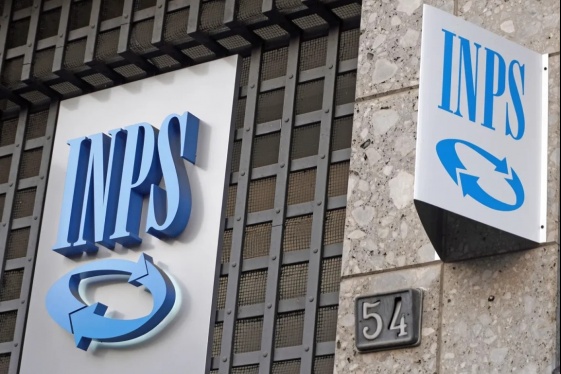

The encounter between Europe’s humanistic tradition and the pragmatic mindset of the United States has, over time, given rise to leadership models that combine vision with practicality, innovation with responsibility. Today, in the age of artificial intelligence, this convergence is not just beneficial—it’s essential.
That may sound like a bold claim, but it reflects a growing reality: AI is no longer just a tool—it’s a complex and non-neutral environment. It reshapes decisions, redefines priorities, and reframes relationships. As Norbert Wiener, the father of cybernetics, once warned: “We better be quite sure that the purpose put into the machine is the purpose which we really desire.”
That’s why I believe that as companies increasingly embrace AI-driven transformation, there is a need for a new executive role—someone who can detect subtle signals, assess consequences, and restore meaning. Enter the Chief Sense Officer.
Managing Risk Is Not About Containment - It’s About Understanding
Risk has always been the raw material of decision-making—the point where the unknown meets responsibility. It’s not just a threat to manage, but an opportunity to steer.
The Chief Sense Officer is not a compliance officer or a control technician. They are an interpreter of complexity—a leader who can fuse technology with ethics, culture, and artistic sensibility. In a world where algorithms can process but not imagine, the ability to perceive nuance, recognize patterns, and find harmony is critical.
Art, in this context, is not decoration or aesthetics—it’s a form of critical analysis, a trigger for mental models that transcend mechanical thinking. The Chief Sense Officer must look beyond the code, intuit what is not yet visible—like a conductor finding meaning in both notes and silence.
In the U.S., we’ve seen several attempts to build ethical frameworks around AI, such as Google’s AI Principles Advisory Council. But without clear mandates or genuine leadership, these initiatives often dissolve—because ethics without soul doesn’t hold.
In Italy, by contrast, some industrial players are taking a more reflective approach. The Generali Group, for instance, has begun rethinking its AI-driven decision-making processes, investing in internal education and values-based governance. This is a model that doesn’t chase change—it shapes it.
A New Kind of Leadership: Where Meaning Meets Innovation
The Chief Sense Officer is not just an innovation manager with a moral compass, nor a compliance officer with a softer tone. They are meaning-makers—strategic thinkers tasked with restoring depth in a world that often confuses speed with direction.
Some pioneering organizations are already showing the way. Salesforce created an Office of Ethical and Humane Use of Technology. ENEL launched its “Open Power” approach, built on listening and co-creation with citizens. The message is clear: innovation needs a face and a voice—a conscience.
Italy’s Role in Leading This Evolution
Italy has a centuries-old culture of calculated risk—from Venetian merchants to Renaissance diplomats to visionaries like Adriano Olivetti, who once said, “There is no progress without social justice.” This mindset is more relevant than ever.
Among Italian American communities—where rigor meets imagination, and tradition meets openness—a new generation of Chief Sense Officers can emerge. These are hybrid leaders, fluent in both cultures, capable of building bridges between Silicon Valley and Latin humanism.
A prime example is the New York Italian Business & Tech Network, which launched the event series “Tech & Ethics: The Human Code,” exploring AI not just from a technical angle, but from a deeply human one.
The Chief Sense Officer as a Future Architect
Risk isn’t something to eliminate—it’s a horizon to understand. And those who’ve navigated business crises know that risk is alive. It’s not just calculated—it’s interpreted.
The Chief Sense Officer embodies that interpretation. They don’t settle for efficiency—they seek meaning. They don’t just protect the company—they position it within a broader world. This is a new role, but one with an old soul—akin to Renaissance architects who bridged science, art, and society.
Their rarest skill? Artistic sensitivity—the ability to perceive hidden beauty in complex systems, to give shape to what doesn’t yet exist, to speak a language that blends emotion and analysis. As Italo Calvino wrote: “Lightness is not superficiality, but the ability to soar above things.”
In the end, the Chief Sense Officer does not weigh innovation down with fear—but lifts it up with thought.
You may be interested
-
Art and culture investments boost Italian pro...
Over the past decade, Italian companies that have invested in art and culture have recorde...
-
Average retirement age in Italy rises to 64 y...
In Italy, the mandatory pension system is administered mainly by INPS (Istituto Nazionale...
-
Bank foundations in Italy boost community imp...
In Italy, bank foundations are independent, nonprofit organizations that focus solely on p...
-
Banks: fewer and fewer branches across Italy
The trend of banks "disengaging" from Italian territory continues unabated. Nearly half o...
-
Beyond the garden: past, present and future o...
For more than three decades, the rules of global trade seemed steady enough. Italy—long a...
-
Beyond trade: Italy’s investment imbalance wi...
As Prime Minister Meloni prepares to discuss tariffs with President Trump in Washington, f...
-
Create Value, Invest with Us: new opportuniti...
The "Create Value, Invest with Us" section is now online on the Agency of State Property’s...
-
Giro d’Italia and the Bike Economy. The excel...
2,100 million euros. That is the estimated value the Giro d’Italia generates for local ter...










